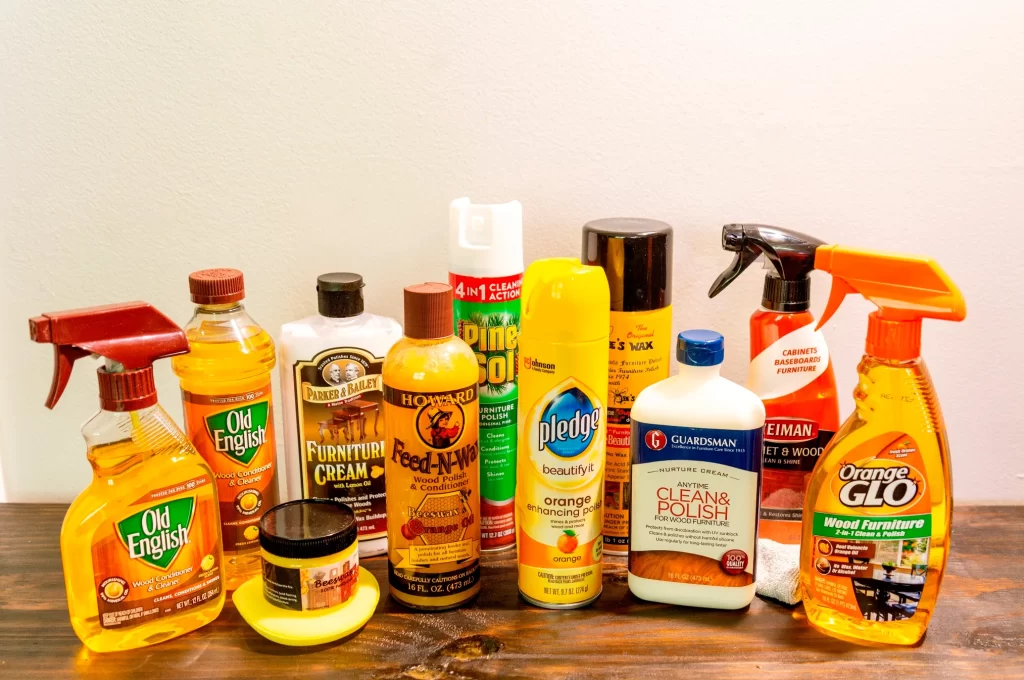Furniture Polish

A fresh coat of polish helps clear away dust while conditioning wood to make it less susceptible to scratches, protecting it against watermarks and candle wax stains.
Selecting an ideal furniture polish requires considering three elements: budget, effort required to clean it thoroughly and whether or not it contains harsh chemicals or fragrances.
Choosing a Polish
Wood furniture can endure daily stresses that compromise its look and integrity over time, necessitating regular polishing to restore and protect it against weather elements, dulling, staining and dulling. Finding an appropriate furniture polish may provide revitalization while protecting these pieces against dulling and staining effects.
Carefully consider all of your options before making a selection for furniture polish for your home, taking into account price, scent, cleaning capabilities and longevity into account.
Furniture polishes typically contain waxes and polymers in addition to other auxiliary ingredients. These waxes may come from either vegetable or animal sources – common vegetable sources being carnauba wax and candelilla wax while beeswax is typically the animal source used. Shellac was once more commonly found in furniture polishes but ecological concerns have limited its usage in furniture polishes.
Opt for polishes free from chemicals or solvents that could pose health risks to you and your loved ones, with reduced fume output to decrease irritation risk in sensitive areas.
Oil-Based Polishes
Oil based furniture polishes like Pledge give furniture an appealing sheen, yet can cause dust particles to adhere to the surface due to being impregnated into its oily residue. As soon as the dust settles on top of wood surfaces it can scratch up their surfaces easily.
Waxes that contain carnauba or beeswax provide more durable sheen than oil-based polishes and help repel dust, making them suitable for both raw wood as well as furniture sealed with lacquer or varnish.
Make natural furniture polish with ingredients you already have in your kitchen for an effortless project that won’t release harmful fumes into the air. Not only does this recipe use organic ingredients that won’t fill the air with toxic fumes or aerosol fumes; its scent makes for a treat as it moisturizes wooden surfaces while protecting them against future scratches or stains! Plus it can even conceal scratches for improved surface care!
Wax-Based Polishes
Waxes create a protective coating to guard furniture against moisture, dirt and scratches. Easy to apply and buff up into a glossy shine when complete, wax polishes can also be used on previously sealed woods as an initial waxing before varnishing varnish, lacquer or hardwax oils or modified French polish; additionally they work great on refinished pieces without discoloring over time, so many museums specify them.
Wax-based furniture polish has a natural feel and smell, as well as being easy to apply with damp cloth and remove using a soft lint-free cloth. Some examples of wax-based polish include Trewax which has an old world traditional scent while remaining thin enough for application onto damp surfaces; furthermore it does not contain silicone which poses challenges to refinishers; Antiquax also comes in this category and boasts medium density that is easily buffable out to high shine levels.
Spray Polishes
Spray products provide similar cleaning benefits as emulsion polishes; they remove dirt while adding a high-gloss sheen to surfaces that get regular use. But unlike waxes, spray products require more effort when applied – you must spray and buff. Some also emit strong fumes when used – be sure to open windows and wear a dust mask when using these products!
Product manufacturers typically package these aerosol polishes in cans that allow users to dispense pressurized product directly onto a cloth, or bottles containing disposable wipes soaked with liquid. While aerosol polishes may seem convenient, their use often adds silicone oil and other contaminants that need extensive buffing off, may damage certain surface finishes (causing dulling) or attract more dust than necessary, and regular usage could actually contribute to further discoloration in older wood furniture (especially if petroleum distillate solvents are present








